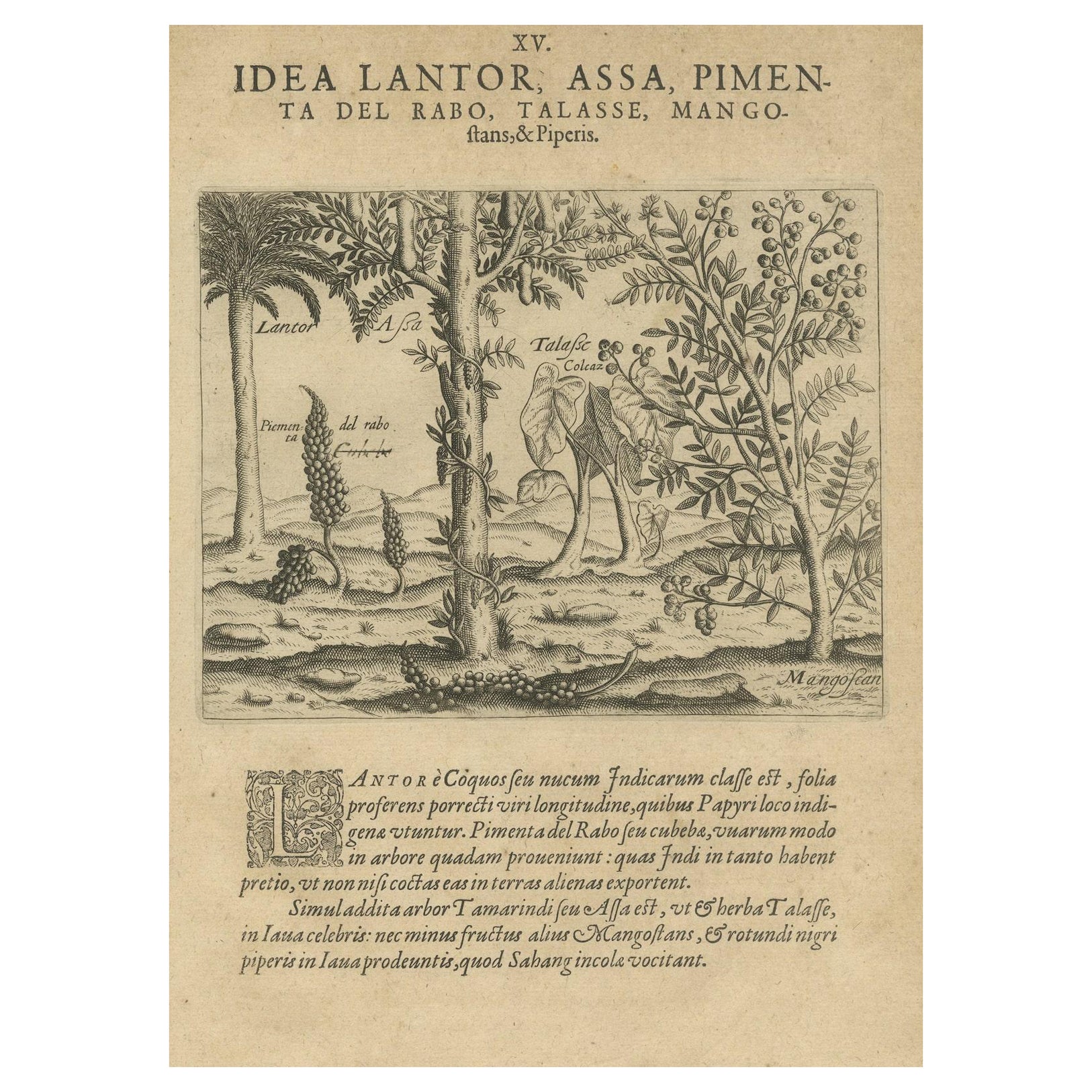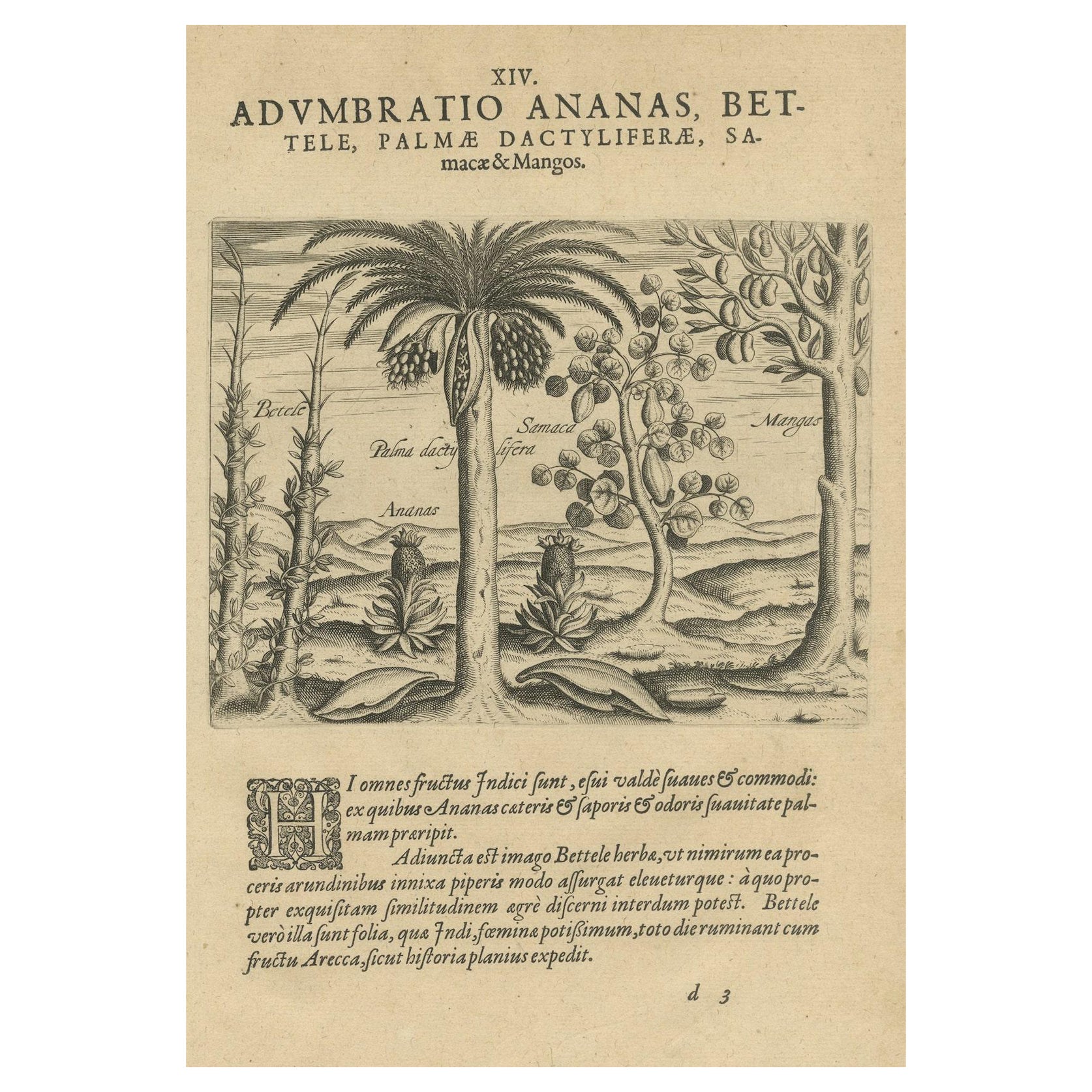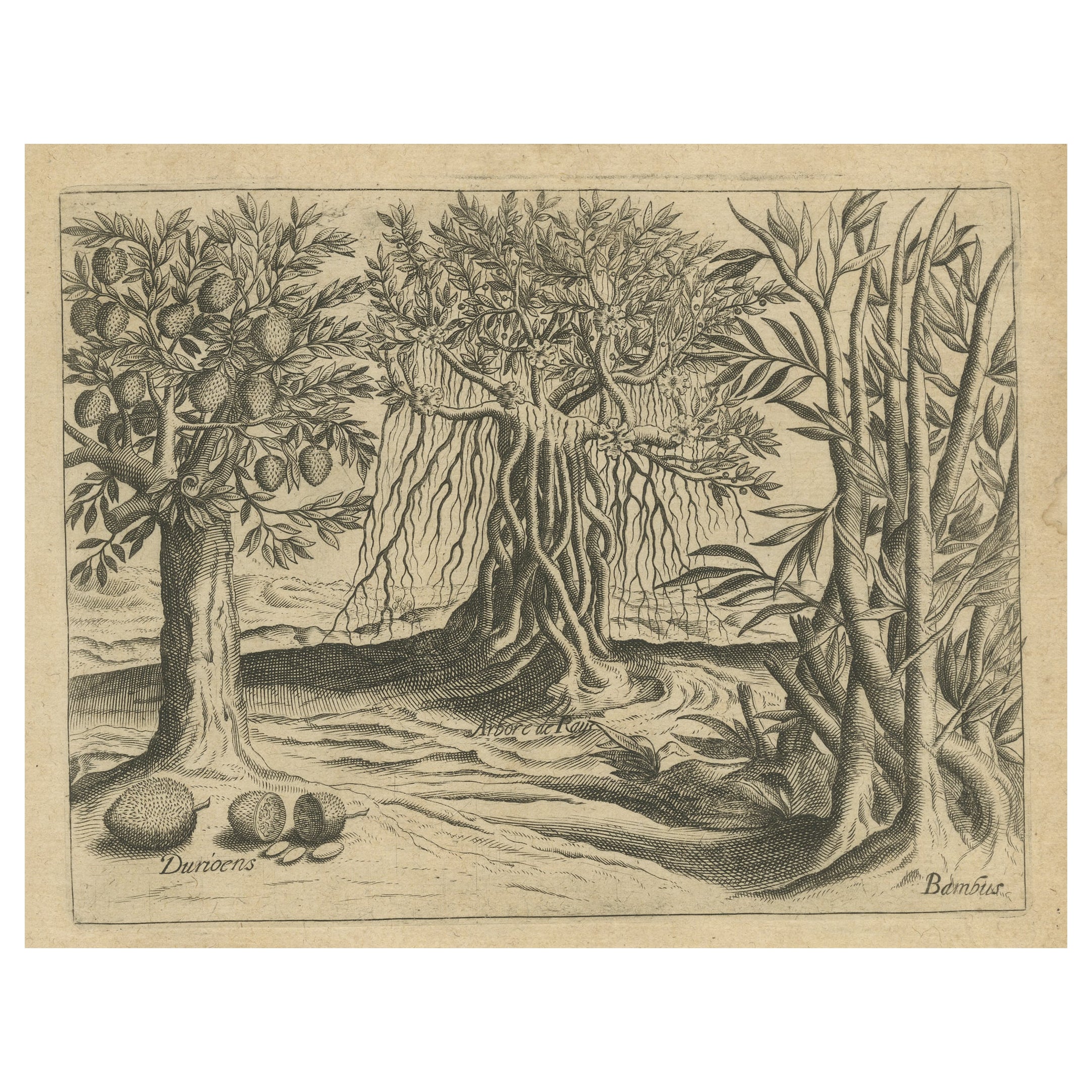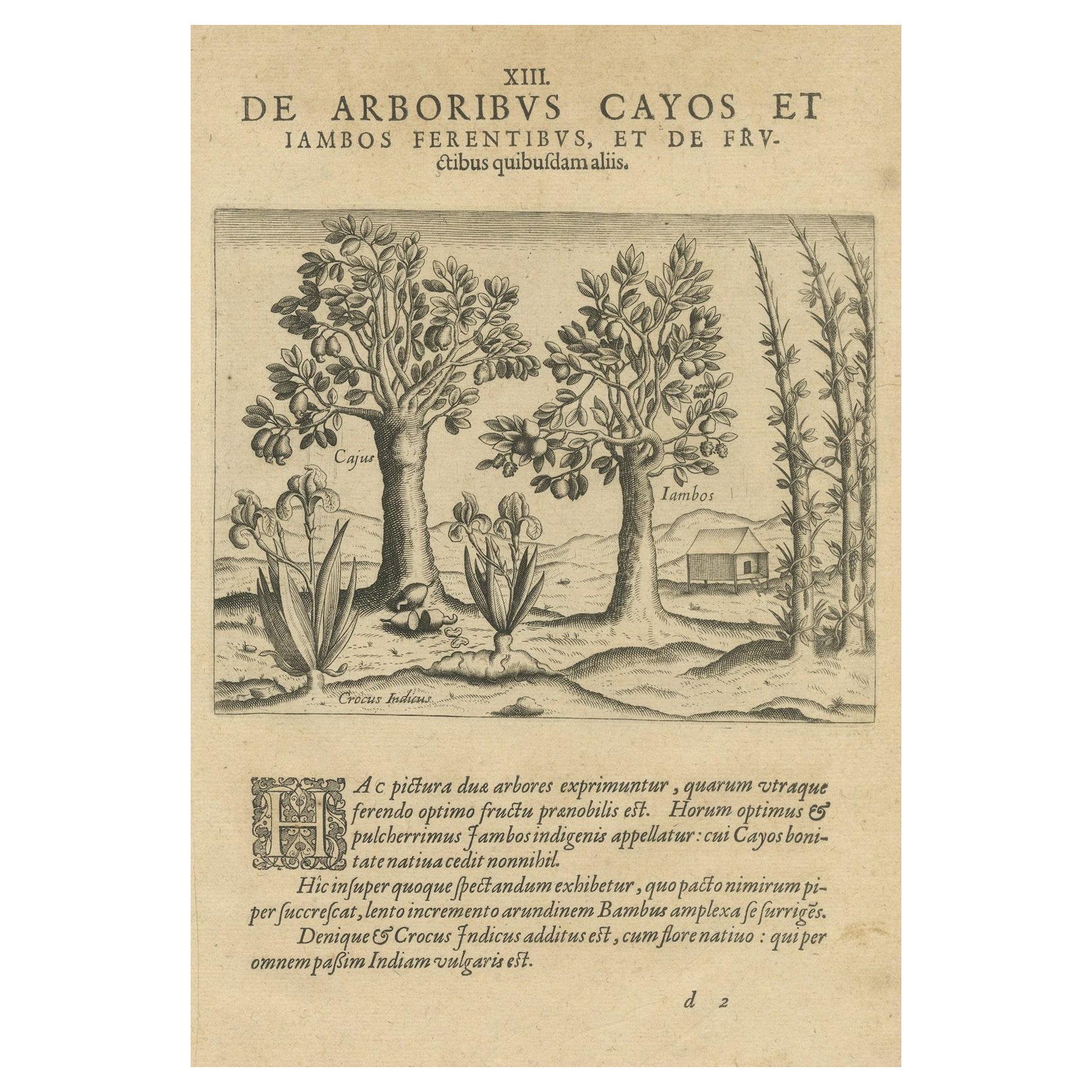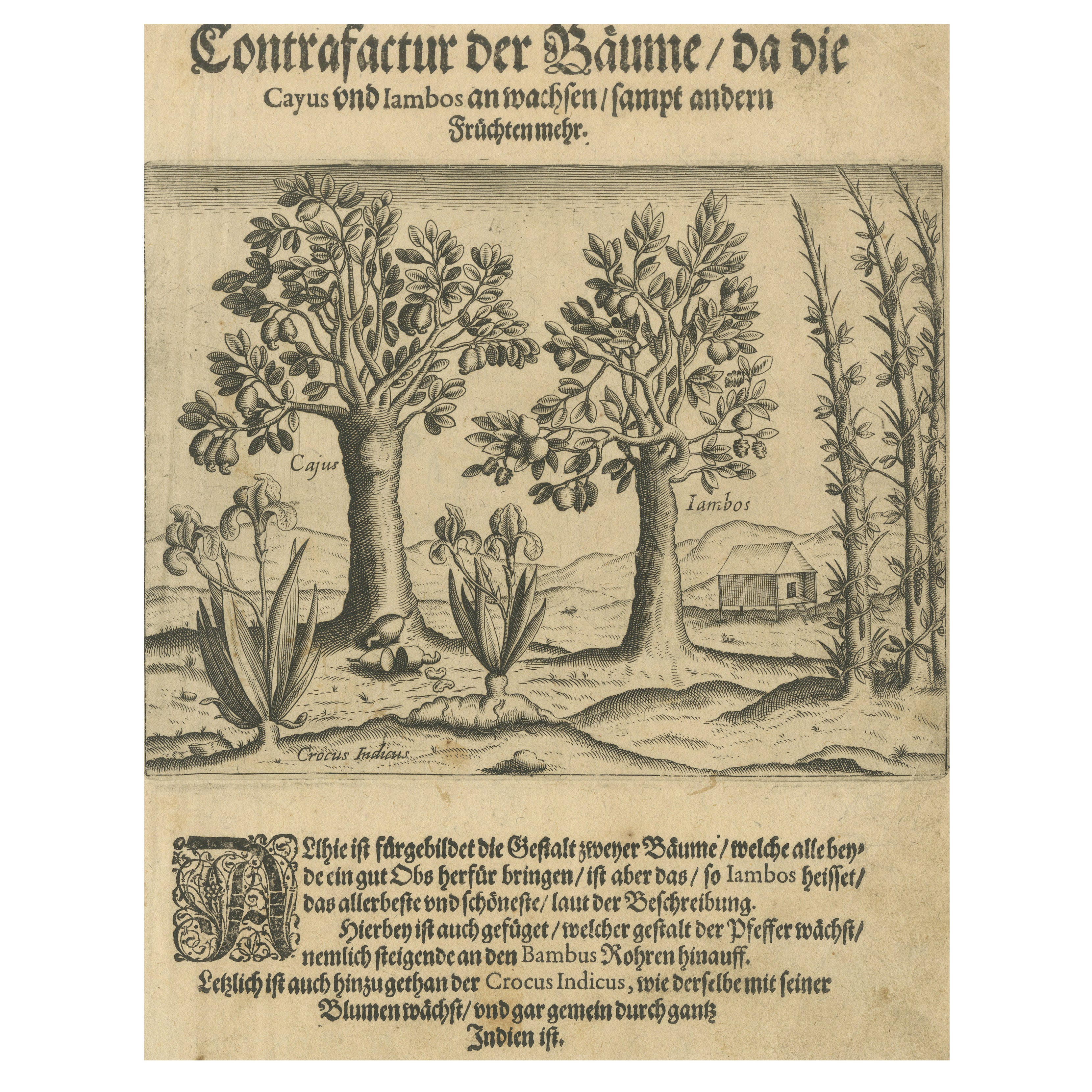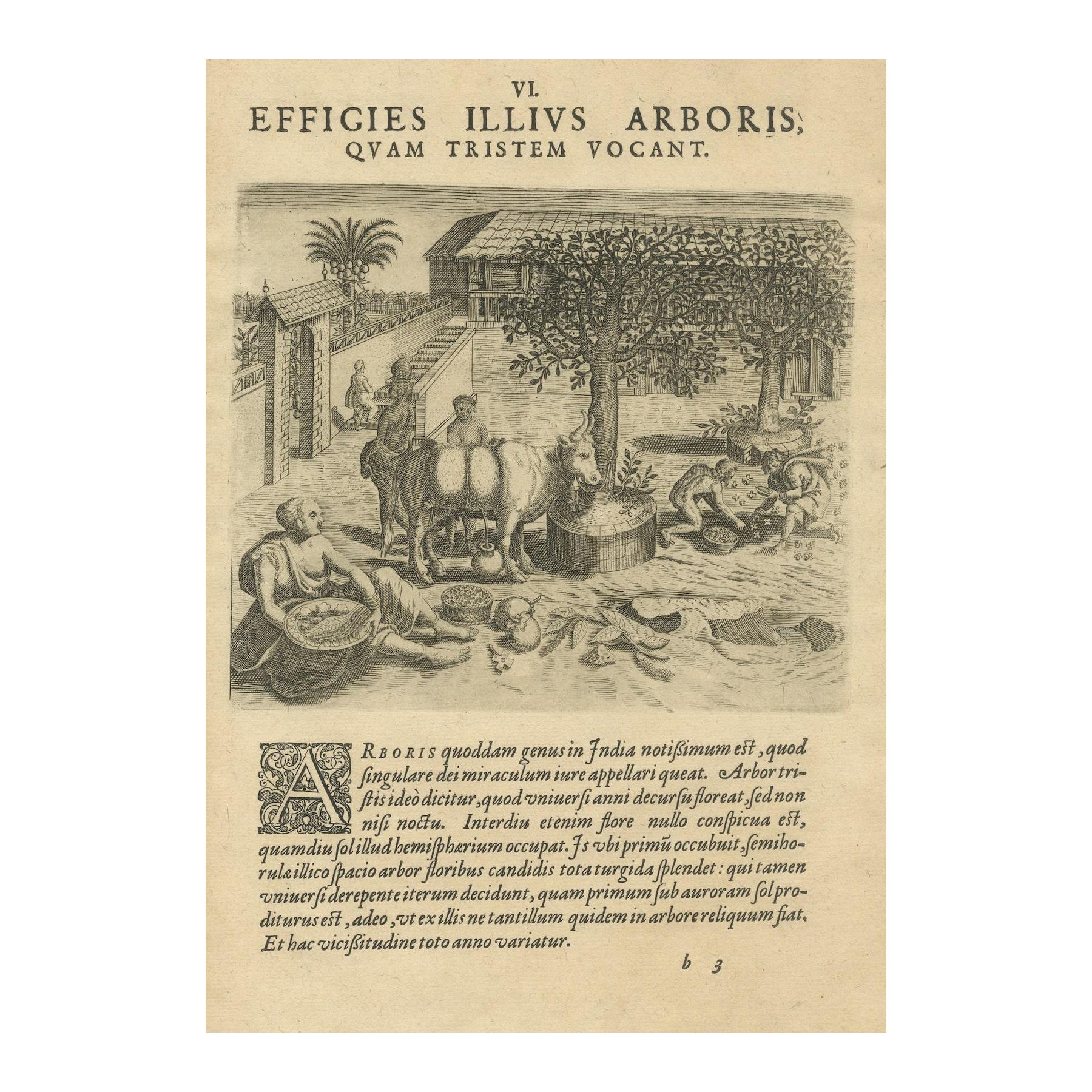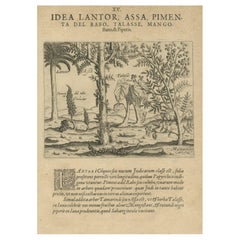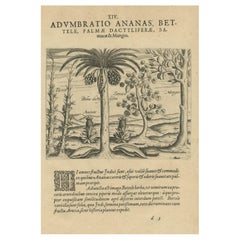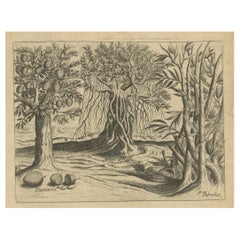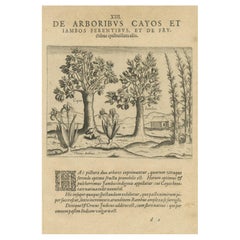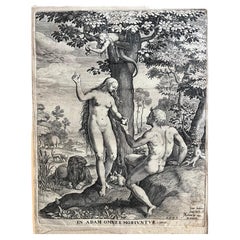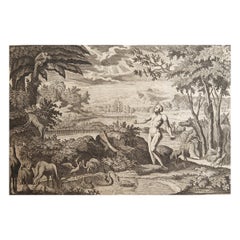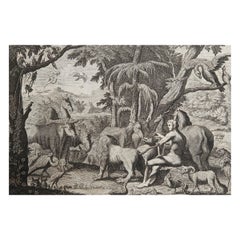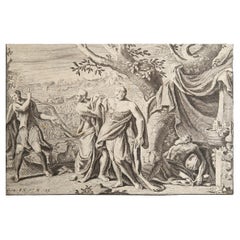Items Similar to Tropical Abundance: The Jackfruit and Palm Trees in De Bry's 1601 Engraving
Want more images or videos?
Request additional images or videos from the seller
1 of 7
Tropical Abundance: The Jackfruit and Palm Trees in De Bry's 1601 Engraving
$526.23
$657.7820% Off
£388.21
£485.2620% Off
€440
€55020% Off
CA$728.48
CA$910.6020% Off
A$789.88
A$987.3520% Off
CHF 419.18
CHF 523.9820% Off
MX$9,728.41
MX$12,160.5120% Off
NOK 5,195.49
NOK 6,494.3620% Off
SEK 4,903.35
SEK 6,129.1820% Off
DKK 3,349.95
DKK 4,187.4420% Off
About the Item
"Tropical Abundance: The Jackfruit and Palm Trees in De Bry's 1601 Engraving"
Description: This remarkable 1601 engraving by Theodore de Bry illustrates the lush vegetation of India, particularly focusing on the Jackfruit tree (Artocarpus heterophyllus), known for its massive, spiky fruits that hang heavily from its branches. The image meticulously captures the tree's extensive foliage and the distinctive fruit that was a significant source of sustenance in the region. Alongside the Jackfruit, the engraving depicts a variety of palm trees, each with its own unique fruit, contributing to the diverse edible landscape of the Indian subcontinent.
In the background, the daily life of the local inhabitants is subtly integrated, with figures tending to the trees and engaging in the harvest. This inclusion of human activity emphasizes the importance of these trees in the cultural and economic practices of the time. De Bry's work not only brought the flora of distant lands to the European audience but also provided a glimpse into the interaction between nature and society in these exotic locales.
Translation of the Latin text:
"The fruit of the Jackfruit tree, unlike other fruits, hangs from the more slender branches of the tree and from the trunk itself, and even more so from the thickest parts of the branches like palms.
In the same table, the image of another fruit is also presented, which is the largest in the island of Bali and is almost round in shape, tending to a conical tip; it is covered with a skin, which on account of its ash color is called by the Portuguese 'Erinaceus.' Those who are fond of this fruit say that it tastes like bread and that it is a preservative against poisons. The tree produces a raceme of fruit in the manner shown here.
Also depicted is the figure of the larger Myrobalan, which is otherwise called Aretca in Indian; this is well known on the island of St. Mary."
The engraving is a page from Part IV of de Bry's "Petits Voyages," which narrates significant expeditions to the East Indies, including those led by Jan Juygen van Linschoten and Cornelis de Houtman between 1595-97, as well as the journey by Jacob van Neck and Wybrandt van Warwijck in 1598-99. These works were not merely artistic endeavors but also ethnographic records, showcasing indigenous peoples, fauna, flora, and the diverse riches of lands like India, Madagascar, and the East Indies.
Though Theodore de Bry began this ambitious project, it was continued posthumously by his family and later completed by his son-in-law, Matthaus Merian, in 1644. This particular engraving, rich in detail and drama, offers a window into the perilous and wondrous experiences of early explorers, and the ways in which these moments were captured and communicated to a European audience hungry for knowledge of the wider world.
- Dimensions:Height: 11.82 in (30 cm)Width: 7.88 in (20 cm)Depth: 0 in (0.02 mm)
- Materials and Techniques:Paper,Engraved
- Period:Early 17th Century
- Date of Manufacture:1601
- Condition:The condition of the print is good, considering its age of over 400 years. Light brownish toning and foxing and some soiling due to handling, mainly around the edges. Please study this image carefully.
- Seller Location:Langweer, NL
- Reference Number:Seller: BG-13596-181stDibs: LU3054337756362
About the Seller
5.0
Recognized Seller
These prestigious sellers are industry leaders and represent the highest echelon for item quality and design.
Platinum Seller
Premium sellers with a 4.7+ rating and 24-hour response times
Established in 2009
1stDibs seller since 2017
2,620 sales on 1stDibs
Typical response time: <1 hour
- ShippingRetrieving quote...Shipping from: Langweer, Netherlands
- Return Policy
Authenticity Guarantee
In the unlikely event there’s an issue with an item’s authenticity, contact us within 1 year for a full refund. DetailsMoney-Back Guarantee
If your item is not as described, is damaged in transit, or does not arrive, contact us within 7 days for a full refund. Details24-Hour Cancellation
You have a 24-hour grace period in which to reconsider your purchase, with no questions asked.Vetted Professional Sellers
Our world-class sellers must adhere to strict standards for service and quality, maintaining the integrity of our listings.Price-Match Guarantee
If you find that a seller listed the same item for a lower price elsewhere, we’ll match it.Trusted Global Delivery
Our best-in-class carrier network provides specialized shipping options worldwide, including custom delivery.More From This Seller
View AllVerdant Wonders: Exotic Trees and Spices of India in De Bry's 1601 Illustration
Located in Langweer, NL
Title: "Verdant Wonders: Exotic Trees and Spices of India in De Bry's 1601 Illustration"
Description: This striking 1601 engraving by Theodore de Bry, titled "IDEA LANTOR, ASSA, PIM...
Category
Antique Early 17th Century Prints
Materials
Paper
$526 Sale Price
20% Off
Cornucopia of India: Pineapples, Betel, Date Palms, Soursop, and Mangoes, 1601
Located in Langweer, NL
Title: "Cornucopia of India: Pineapples, Betel, Date Palms, Soursop, and Mangoes in De Bry's 1601 Engraving"
Description: This 1601 engraving by Theodore de Bry displays a rich arra...
Category
Antique Early 17th Century Prints
Materials
Paper
$526 Sale Price
20% Off
Botanical Marvels of India: Bamboo and Durian in De Bry's 1601 Copper Engraving
Located in Langweer, NL
This 1601 engraving by Theodore de Bry, a master engraver and publisher of the late Renaissance period, depicts the flora of India with a remarkable degree of detail and artistry. The print is titled "DE ALGA SEV ARVNDINE INDICA, BAMBVS DICTA, ITEM DE arbore radicosa: & tandem de arbore Duryeons," which translates to "About the Seaweed or Reed of India, called Bamboo, also about the root tree: and finally about the Duryeons tree."
In the illustration, we see a lush depiction of a bamboo grove, with its characteristic tall and slender form, showcasing the plant's extensive root system and dense foliage. To the left, there is a tree bearing large, round fruits, likely the durian, labeled here as "Duryeons." The durian is known for its distinctive size, unique aroma, and spiky husk. The image captures both the exotic appeal and the utilitarian value of these plants, which were of great interest to European audiences unfamiliar with such tropical vegetation.
The visual composition conveys the tropical abundance and biodiversity of the Indian subcontinent. De Bry's engravings like this were highly sought after in Europe for their exotic subject matter and served to educate and fascinate the European public about the natural wonders of the world beyond their borders. As a historical document, this engraving provides insight into the botanical knowledge and the artistic conventions of the period, making it a valuable piece for both its historical significance and its aesthetic beauty.
De Bry's work is renowned for its attention to detail, and this print is a testament to his ability to capture the essence of exotic lands and their natural abundance. His engravings were among the first visual records to reach Europe from the New World and the East, fueling curiosity and fascination with distant lands. This particular piece is not only a work of art but also a historical document, offering insight into the botanical wealth of India as seen through the eyes of early modern Europeans...
Category
Antique Early 17th Century Prints
Materials
Paper
$526 Sale Price
20% Off
Exotic Flora of the Indies: The Cajus and Jambos Trees Copper Engraved in 1601
Located in Langweer, NL
Title: "Exotic Flora of the Indies: The Cajus and Jambos Trees in De Bry's 1601 Engraving"
Description: This detailed engraving by Theodore de Bry, dating back to 1601, beautifully illustrates two tropical trees, the Cajus and the Jambos, both renowned for their delectable fruits in the regions of India. The Cajus tree, likely referring to what is known today as the cashew, is depicted with its distinctive fruit that dangles below the swollen pedicel, commonly called the cashew apple. The Jambos tree, with its lush, dense foliage and abundant fruiting, could be related to the rose apple, known for its fragrant, rose-scented fruit.
Included in the scene is a depiction of the Indian Crocus, adding a touch of the diverse understory vegetation of the tropical climate. The image conveys a peaceful coexistence with nature, as indicated by a modest dwelling in the background, suggesting the integration of these trees into the daily lives of the local inhabitants for both nourishment and commerce.
The text is in Latin, and here is the English translation:
"In this picture, two trees are shown, each of which bears the most excellent and noble fruit. The best of these is called the Jambos, native to the region, which the inhabitants call Cayos. On this tree, nothing of note is bestowed.
Moreover, this also represents a marvelous spectacle, in which the slow-growing cane bamboo surrounds itself. Finally, the Indian Crocus has been added, which blooms with its native flower; which is widespread throughout all of India."
De Bry's engravings were pivotal in bringing the natural wealth of the New World and the East Indies to the European imagination. His work not only served as an artistic endeavor but also as an educational tool that fed the European appetite for knowledge about the vast diversity of the world's flora and fauna. This engraving, with its precision and attention to botanical detail, remains a significant historical record of the natural world as seen through the lens of the early modern European...
Category
Antique Early 17th Century Dutch Prints
Materials
Paper
Cashew and Rose Apple Trees with Pepper and Crocus Indicus – de Bry, 1600
Located in Langweer, NL
Cashew and Rose Apple Trees with Pepper and Crocus Indicus – de Bry, 1600
Exotic early engraving from Johann and Israel de Bry’s illustrated edition of Jan Huygen van Linschoten’s t...
Category
Antique Early 1600s Dutch Prints
Materials
Paper
The Melancholy Tree of the East: A 1601 de Bry Engraving from 'Indiae Orientalis
Located in Langweer, NL
This engraving from Theodore de Bry's "Indiae Orientalis" showcases a serene yet intriguing scene titled "EFFIGIES ILLIUS ARBORIS, QUAM TRISTEM VOCANT,...
Category
Antique Early 17th Century Prints
Materials
Paper
$526 Sale Price
20% Off
You May Also Like
Adam and Eve Engraving by Johann Sadeler circa 1579
Located in Doylestown, PA
A rare engraving titled “IN ADAM OMNES MORIUNTUR” (All die in Adam) by Johann Sadeler after a work by Maerten de Vos, depicting Adam taking the forbidden fruit from Eve. Signed and...
Category
Antique 16th Century Dutch Renaissance Prints
Materials
Paper
Original Antique Print after Jan Luyken, Amsterdam, Genesis II, 1724
Located in St Annes, Lancashire
Wonderful copper-plate engraving after Jan Luyken
Published by Marten Schagen, Amsterdam. 1724
Text on verso
The measurement given is the paper size.
Category
Antique 1720s Dutch Renaissance Prints
Materials
Paper
Original Antique Print after Jan Luyken, Amsterdam, Genesis II, 1724
Located in St Annes, Lancashire
Wonderful copper-plate engraving after Jan Luyken
Published by Marten Schagen, Amsterdam. 1724
Text on verso
The measurement given is the paper size.
Category
Antique 1720s Dutch Renaissance Prints
Materials
Paper
Original Antique Print After Jan Luyken, Amsterdam, Genesis IX, 1724
Located in St Annes, Lancashire
Wonderful copper-plate engraving after Jan Luyken
Published by Marten Schagen, Amsterdam. 1724
Text on verso
The measurement given is the paper size.
Category
Antique 1720s Dutch Renaissance Prints
Materials
Paper
Original Antique Print after Jan Luyken, Amsterdam, Genesis IV, 1724
Located in St Annes, Lancashire
Wonderful copper-plate engraving after Jan Luyken
Published by Marten Schagen, Amsterdam. 1724
Text on verso
The measurement given is the paper size.
Category
Antique 1720s Dutch Renaissance Prints
Materials
Paper
Jan & Caspar Commelin: 17th Century Botanical Engravings, 1st Edition
By Jan & Caspar Commelin
Located in Richmond, GB
""Horti Medici Amstelodamensis Rariorum"" (Rarities of the Amsterdam Physic Garden),
1st edition, 1697 - 1701. ( Ref: Dunthorne: 81)
Jan Commelin (1629-1692) was Director of the Am...
Category
17th Century Paintings
Materials
Silver
More Ways To Browse
Murano Red Fish
O Brien Used Furniture
Oggetti Murano Vintage
Ole Bjorn Kruger
Onyx 19th Century French Mantel Clock
Onyx Cube
Owl Japanese
Oyster Burl
Painted Black Lacquer Chest
Painted Red Distressed
Papier Mache Head
Paradis Paris
Pea Pod
Persian Calligraphy
Perugia Italy
Pink Glass Bird
Plaster Angels
Polychrome Chest Of Drawers
